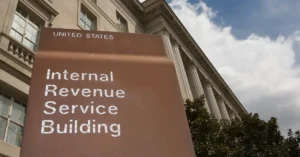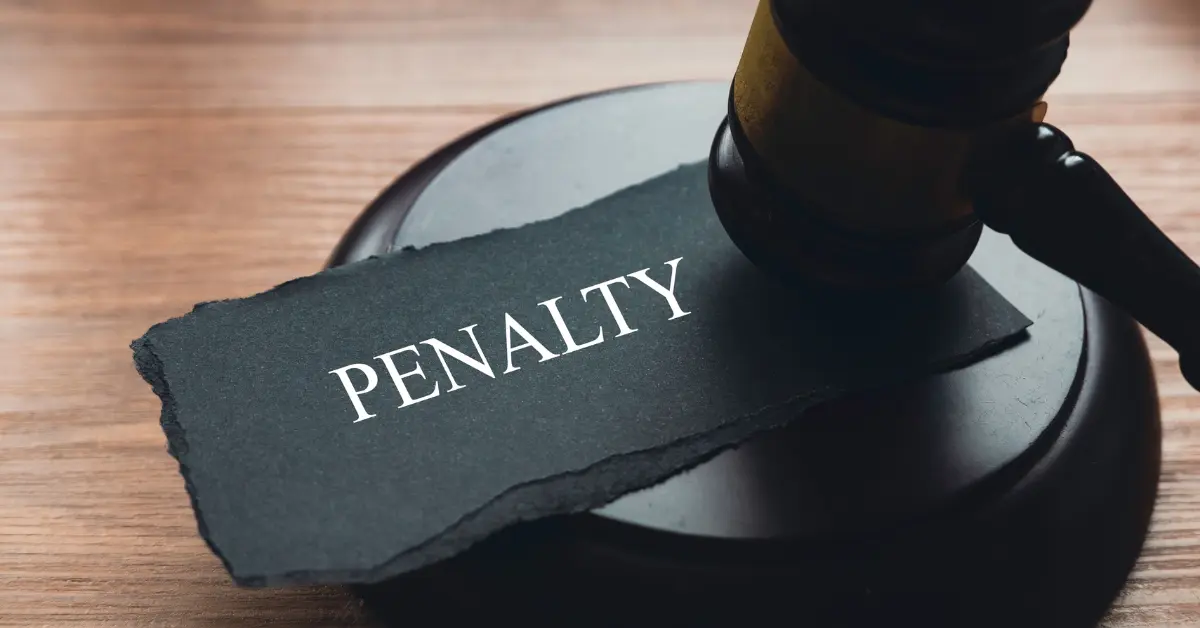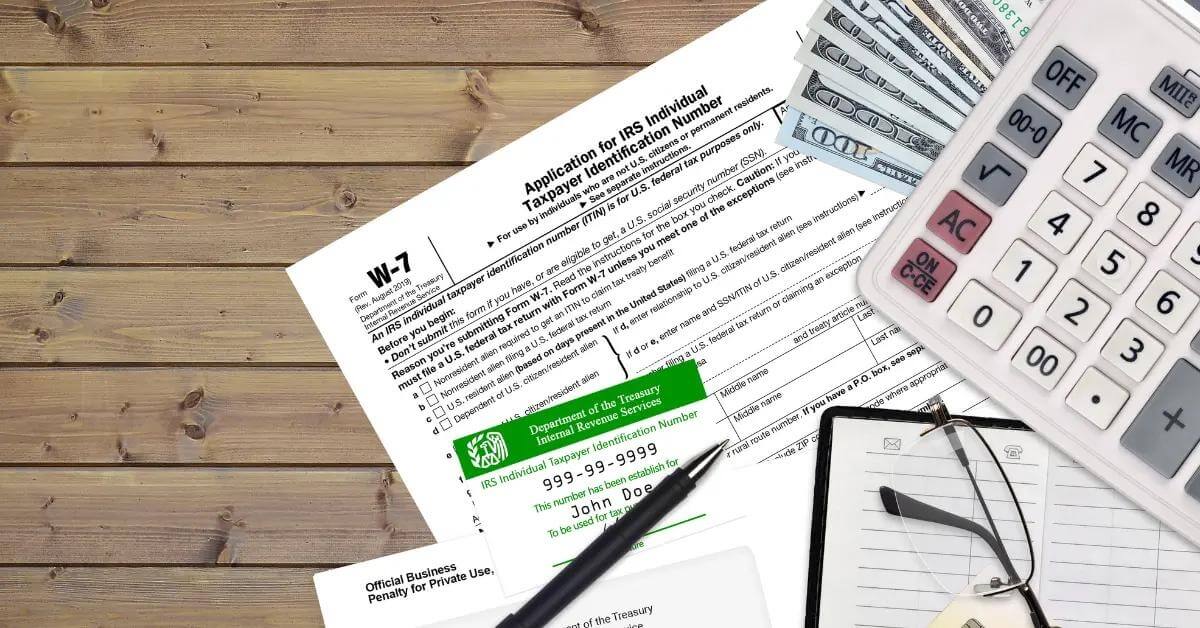When tax season rolls around, everyone is curious: do I owe the IRS?
As Americans rush to file their taxes this year, some are discovering an unfortunate reality.
Roughly 30 million Americans are expected to write a check to Uncle Sam. That accounts for 21 percent of United States tax filers. This is catching many people by surprise due to the recently passed Tax Cuts and Jobs Act (TCJA). Americans were under the impression that they would be seeing a larger tax refund than normal this year.
In addition, not everyone is lucky enough to receive a tax return. While it is easy to get behind on taxes, it is a mistake for US taxpayers to ignore notices received from the IRS. The criminal penalties you potentially face mean that you need to take immediate attention.
This does not mean you are defenseless, however. In 1998, there was a bill designed to restructure the IRS, and it provided taxpayers rights concerning a number of circumstances. This included having the IRS provide you of an explanation of your rights when the collection process takes place. Not knowing how much you’ll be owing by the tax deadline is enough to add stress to your life. Or maybe you simply want to know so you can start saving. You might even owe a tax debt and want to figure out how much you owe.
Whatever your reason is, figuring out just how much you owe can be confusing. But, there are a few steps you can take to estimate how much you might have to pay the IRS. For a complete guide to finding out how much you owe, keep reading.
What Is the Tax Cuts and Jobs Act?
Before starting your taxes, it is important to understand the newly passed tax reform package. Last year, the United States Congress passed a substantial overhaul of the tax collection process.
This tax reform is commonly referred to as the TCJA. This new law changed everything including deductions, tax rates, and exemptions.
Continue reading for a brief synopsis of the major changes to the tax law.
Standard Tax Deductions
One of the most impactful changes of the TCJA is to the standard deduction. It is estimated that 90 percent of taxpayers will use the standard deduction in 2018.
The standard deduction is a fixed amount that reduces your annual income. Using the standard deduction is advantageous because it is much simpler than itemizing.
For single filers, the standard deduction increased from $6,500 to $12,000. Married couples, on the other hand, will see it increase from $13,000 to $24,000. This amount is so generous that the vast majority of filers will use standard deduction instead of itemized now.
Tax Credits
One of the best changes for tax filers is the child tax credit. Previously, tax filers received a $1000 tax credit for each dependent child that they claimed.
Tax credits are more impactful than deductions because they are a dollar for dollar reduction in the amount that you owe. The TCJA doubled the child tax credit to $2,000. This means you get an extra $1,000 credit for each claimed child.
Tax Exemptions
Personal exemptions were a major part of the prior tax structure. In addition to deductions, personal exemptions were another tool to lower taxable income.
The way that they worked was that you reduced income by $4,050 for each person in the household. This included yourself, as well as your spouse and any dependents.
Under the TCJA, tax filers no longer need to worry about personal exemptions. The law eliminated their usage until 2025.
Tax Deductions
Tax filers can still itemize their taxes if they have sufficient deductions. The only way this is an effective strategy is if your itemized deductions exceed the standard threshold.
There are far too many deductions to cover in one article. Instead, we will cover the most significant deduction reforms due to the TCJA.
Perhaps the most impactful change is a cap to the state and local tax (SALT) deduction. In the past, there was no limit on the amount you could deduct. The TCJA, on the other hand, caps this deduction at $10,000. This is not a sufficient amount for many people living in high-tax states like California or New Jersey.
Another change in the positive direction is the Qualified Business Income Deduction. This allows business owners to deduct 20 percent of their income.
How Do I Know If I Owe the IRS?
If you think you owe the IRS, you aren’t alone, there are currently over 900,000 delinquent accounts in the country. If you know how to find out how much you owe the IRS, you’ll be able to stay ahead and avoid any surprising debts.
When calculating your tax liability, a representative or online tool will be able to answer this for you. Based on the calculation, you will be able to see if you owe money or if you’ll receive a return. If you suspect that you owe a tax debt for a previous year, using online tools or contacting the IRS can help you determine how much you owe.
Your rights when it comes to collection activities
It is important to remember that the IRS makes mistakes. The IRS saying you owe a specific amount in back taxes does not mean that their figures are correct. Most importantly, you need to remember: You as a taxpayer have a right to due process. While your former spouse may be guilty of wrongdoing, you may still receive innocent spouse relief.
You may be eligible for an installment payment arrangement. You can also offer the IRS an offer in compromise. The IRS cannot throw you in jail simply because you are unable to pay your taxes. Despite your rights as a taxpayer, dealings with the IRS continue to be intimidating and stressful. When the IRS states you owe money, it has at its disposal a number of tools to collect tax deficiencies. Rather than meet with IRS agents on your own, it is almost always a good idea to have legal representation present in helping tell your side of the story.
Do I Owe the IRS? Documents Needed Before You Find Out
First and foremost, you need to make sure you have all your information in order. This will help you, your representative, or an IRS agent locate your tax information for the year.
Typically, towards the end of January, you will start receiving important tax documents in the mail. Some companies make tax documents available to download on their secure website.
For most people, the most important document for tax purposes is the W-2. This is your wages and income statement provided by your employer.
It shows how much money you earned during the prior calendar year. In addition, it also states how much in federal and state income taxes were paid.
Some workers are considered independent contractors and do not get a W-2 form. Instead, the company that contracts out for their services sends a 1099-MISC form. The information on this form is very similar to the W-2.
Banks and lenders are institutions that also send out important tax documentation. Your mortgage lender sends out a 1098 form that states how much mortgage interest and property taxes were paid. Both of these items are common deductions for those that itemize.
Other common examples are the 1098-E or 1098-T form. These forms cover student loan interest or tuition, which are both adjustments to income.
Social Security Number
If you don’t have your social security number memorized, make sure you have your social security card handy. This acts as an identification number to find your tax information. You’ll need this number for almost every step of the process.
Tax Filing Status
Make sure you are aware of your tax filing status prior to calculating your taxes. Which filing status you qualify for will determine your tax rate as well as the standard deduction amount you are eligible for. Here is a list of different tax filing statuses:
- Single: if you are single or divorced and do not qualify for another filing status, file as single.
- Married, Filing Jointly: if you were married by December 31st the previous year and no one else is claiming you as a dependent on their tax return, you can file as married, filing jointly
- Married, Filing Separately: if you were married by December 31st the previous year and someone is claiming you or your spouse as a dependent on their tax return, file as married, filing separately. You can also use this filing status if you are separated or simply want to keep your taxes separate.
- Head of Household: if you were unmarried by December 31st the previous year, paid more than half the cost to upkeep a home, had a dependent parent, or had a qualifying dependent live with you, you can file as head of household.
- Qualifying Widow(er) with Dependent Child: if your spouse died in the previous year, you can file as married filing jointly. Every tax return after that year, up to two years after, can be filed as a qualifying widower with dependent child. You may not use this filing status if you remarry within that two-year window.
You can also use the IRS Filing Status tool. It’s a small quiz used to determine your filing status.
Identity Verification & Other Information Needed
While finding out how much you owe, you’ll want to gather the right materials and take the right steps to ensure there is no error or to see if there is any additional amount you may owe.
The last thing you want is to be hit with an added bill when you thought you were all caught up.
You’ll need your full name, current address, an e-mail you have access to (they’ll send you a code if you use the online method), and birthdate.
Copies of All Taxes Owed
If you have access to all of your prior tax returns, this is a good time to gather them. Take note of the amount owed in each year and begin to tally it up. You should be looking at copies of returns as well.
If you paid your taxes but don’t have the receipts on hand, contact your tax accountant and request copies from them.
Filing Past-Due Returns
In some cases, what you owe is a matter of backed returns. This can be a bit messy as you will have to use the forms for the corresponding year.
For example, if you are filing back taxes from several years ago, you’ll have to use the return forms that were used in the year you are filing for, not the forms that are used today. Fortunately, you can find many of these forms online.
Know Your Interest and Penalties
While looking at old receipts is a smart way to be sure you aren’t missing anything, keep in mind that this amount does not include any additional interest fees or penalties.
The cost of interest and penalties will vary depending on how long you’ve been owing on your taxes. It’s best to consult with a tax accountant or attorney in this area to get a better idea of the full amount.
5 Ways to Determine How Much You Owe the IRS
If you feel there’s a chance you’re behind on your taxes, it’s best not to keep your head in the sand. The truth is the IRS will only be reaching out to you once things have become a real problem, and the idea is to stay on top of your payments so you don’t end up with a mess on your hands.
The good news is you have some fast and easy ways to find out exactly how much you owe so you can handle any outstanding payments.
Between online tools and local IRS resources, you should be able to determine your tax liability quickly. The easiest way to determine the amount owed is to take all of your tax preparation documents to a certified accountant. For a service fee, an accountant will submit your taxes for you. In addition, tax professionals provide legal support in the event of an IRS audit.
1. The IRS Online Tool
If you’ve already filed your tax return, going online is by far the fastest way to find out how much you owe to the IRS. In fact, the IRS has even created an easy to use tool to help you do just that. On this page, you can create an account or log in to view your tax account. This will also tell you how much you owe, if any, from previous tax returns.
Not only will the tool show you any payments you owe, but it will also show all payments that have been made in the last 18 months. If you’ve made a recent payment and don’t see it appearing on the site, don’t worry. It typically takes one to three weeks for payment to appear on the tool.
You can also use an online calculator to estimate your tax liability.
When using the online tool to calculate your estimated tax liability, the IRS uses a three-step identity verification. If you choose to calculate your taxes online, you’ll need this information. After receiving your identification information, like your social security number, name, and birthdate, the IRS will use financial account numbers to verify your identity. Here is a list of applicable accounts via the IRS website:
- Credit Card
- Student Loan
- Mortgage or Home Equity Loan
- Home Equity Line of Credit
- Auto Loan
The IRS will use the numbers of these accounts or partial digits of credit card numbers. Make sure you have these handy beforehand. The third verification step is a text message. Make sure you have a US-based phone number and the ability to receive text messages.
2. By Phone - Calling the IRS
Calling the IRS directly is another way to find out how much you owe, however, it’s important to remember to call within operating hours. Currently, the hours to call are:
Monday-Friday from 7 a.m – 7 p.m local time
Saturday: Closed
Sunday: Closed
You can reach the IRS by calling 1-800-829-1040, however, if you are calling on behalf of a business dial 1-800-829-4933.
Be sure to have your social security number and any other important documents on hand when calling.
3. Visit a Local IRS Office
If you don’t have access to a computer, a local IRS office can also help you determine your tax liability after filing your taxes. However, if you suspect you have a past due balance, it may be beneficial for you to hire a tax attorney to represent you.
4. Check IRS Balance: Request a "Record of Account"
By filling out and sending Form 4506-T to the IRS, you can obtain a Record of Account and Account Transcripts for previous years. This can help you determine whether or not you owe a debt to the IRS. Once you know how much you owe, if anything, you can hire tax professionals or work out a payment plan with the IRS.
5. By Mail
While it’s difficult (and time-consuming) to directly mail the IRS to find out your owed balance, you may be mailed a notice by the IRS. In the event that you receive a notice, you’ll find the owed balance is included there.
It’s important to remember that the IRS will usually only send notices corresponding to a specific year. This means you may still owe more than the balance stated if the additional debt took place in a different year.
Creating a Payment Plan on Taxes Owed
Now that you’ve reviewed the damage, it’s time to take action. Many people aren’t aware that the IRS is actually willing to make plans with you to help you pay off your debt. Like any payment collection organization, they just want to know they’ll be getting their money.
Once you make your first initial payment it will be easier to create and adhere to a set payment plan. Here are some ways to start paying off your tax debt:
Option 1: Installment Agreements
Contact the IRS, or have your tax accountant contact the IRS on your behalf and request an installment agreement. They may require you send over some additional documentation such as your payroll receipts or bank statements to prove you are unable to pay the full amount.
From here, it will be easier to have an installment agreement created.
Option 2: Offer in Compromise
Some taxpayers are eligible for an offer in compromise, which means you won’t be required to pay the full amount. Again, they would rather receive some of their money than none of it. However, there are specific requirements to prove that you are unable to pay the full amount.
For example, you may have to show that your home, car or belongings are not worth the value of your owed taxes, proving that in no circumstance could you pay the remaining amount.
File estimated taxes correctly
According to an IRS announcement, the failure to “pay enough tax through withholding and estimated tax payments” may result in penalties. Penalties can arise if “estimated tax payments are late, even if you are due a refund when you file your tax return.” Generally you will need to pay estimated taxes when tax liability exceeds a particular amount – such an amount beyond any withholdings from wages.
US residents who pay estimated taxes will ordinarily need to make payments four times per year. Again, a late payment can trigger a penalty. Calculating such taxes require that you look at your taxable income, expected adjusted gross income, deductions, taxes, and any credits you receive during the year. The failure to pay the full amount owed can also result in tax penalties.
Every tax obligation is different, however. You may not owe estimated taxes if you only owe a small amount of taxes or if you paid 90 percent of your taxes for the current year or 100 percent of taxes for the prior year. There are also special rules in place regarding estimated tax payments for certain occupations such as farming or fishing.
Don't Let Taxes Stress You Out - Speak With a Tax Attorney
There is a considerable amount of confusion when it comes to paying estimated taxes. While most individuals simply have wages withheld from their paycheck, many taxpayers need to make payments throughout the course of the tax year beyond any withholdings. This is particularly true for individuals who are self-employed.
Yet the failure to file forms regarding estimated taxes correctly, just like the failure to file tax returns in general, can result in tax penalties. Tax season is an important time of year for personal finance. Many people use their tax return as forced savings and get a large return.
Others are desperately trying to minimize the amount that they owe to Uncle Sam. When in doubt, speak to a professional. Tax attorneys know what options you can take when it comes to owed or back taxes, they will also know which paperwork is required to get it all resolved. It’s always the safe and preferred choice over falling any deeper into debt.
Whether you owe money this year, have tax debt, or simply want to know how much you might owe, don’t let your tax liability stress you out. There are always options available to you to make paying your taxes less overwhelming. Figuring out how much you owe is the first step to freedom.
So, stop asking “Do I Owe the IRS?” and start taking action!
If you suspect you owe a tax debt, contacting a tax professional can be a huge support during a tough tax season. They may even be able to help you reduce your debt.








